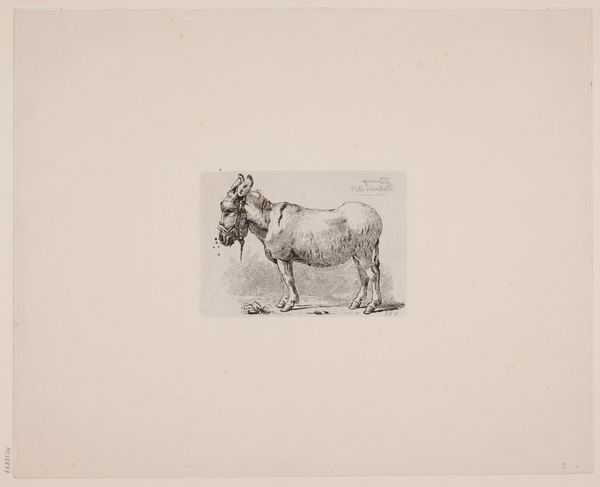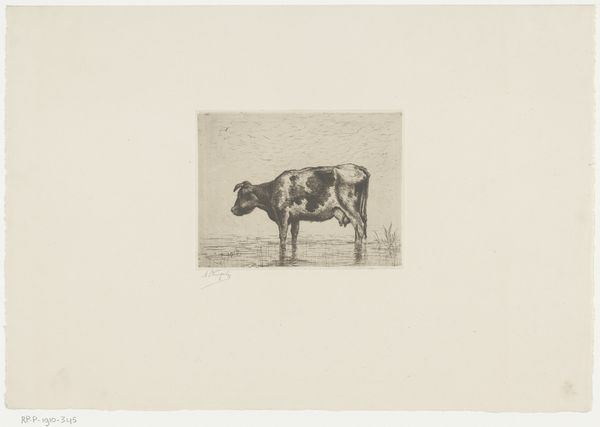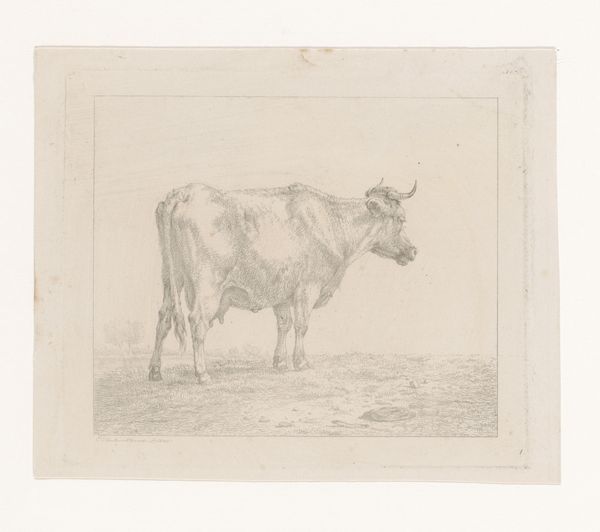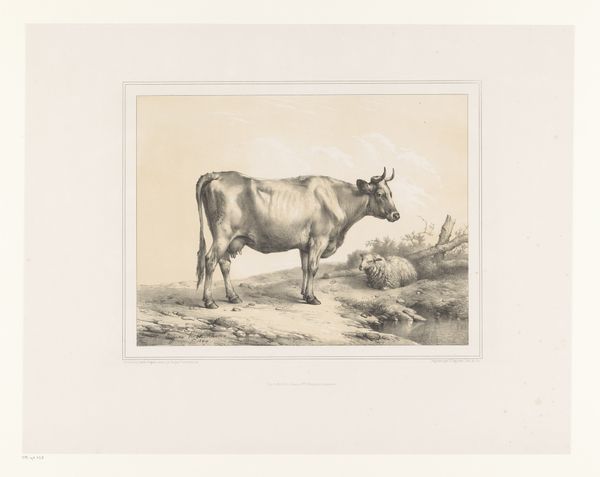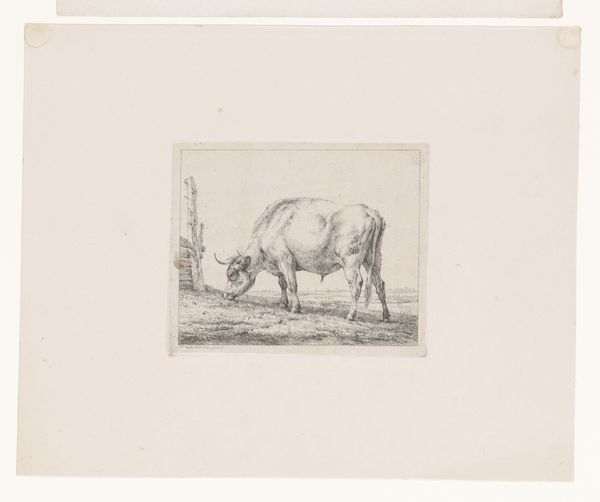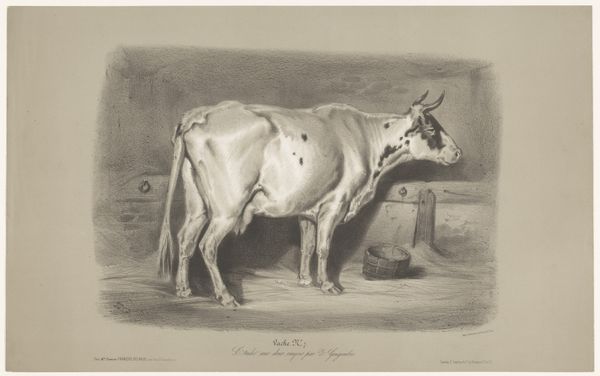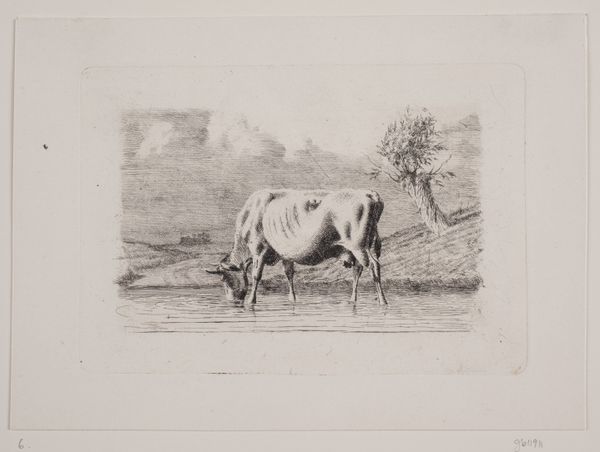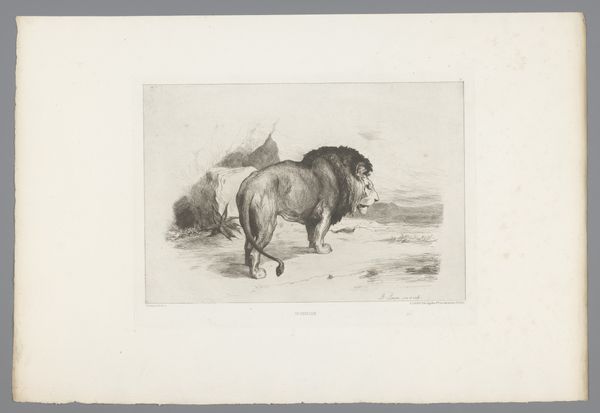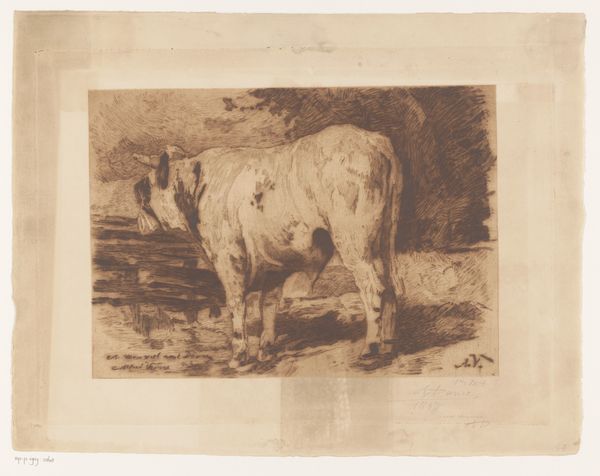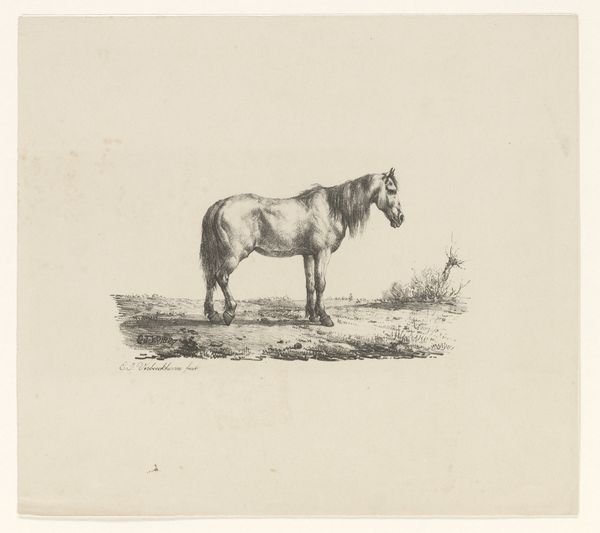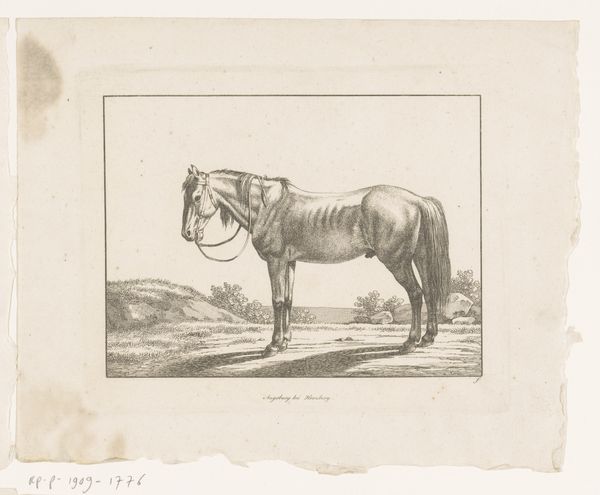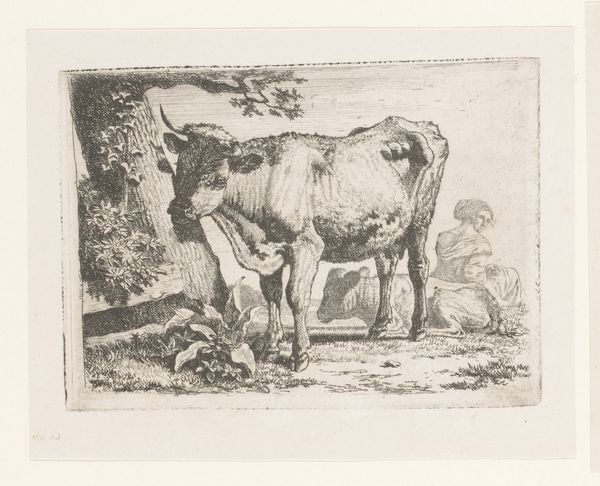
drawing, print, pencil, engraving
#
pencil drawn
#
drawing
#
light pencil work
#
animal
#
ink paper printed
# print
#
pencil sketch
#
landscape
#
pencil drawing
#
pencil
#
genre-painting
#
academic-art
#
engraving
#
realism
Dimensions: height 501 mm, width 634 mm
Copyright: Rijks Museum: Open Domain
Editor: This is Eugène Verboeckhoven’s “Stier,” or “Bull,” created in 1844. It’s a pencil drawing and print. I find the realism pretty striking, especially the way the artist captured the texture of the bull’s fur. What stands out to you? Curator: What strikes me is how this image normalizes the patriarchal structures embedded in agricultural practices. We see the bull not just as an animal, but as a symbol of power and ownership, central to the economic and social order of the time. Consider the role of livestock in 19th-century Belgium. How does the bull represent control over the natural world, reinforcing a hierarchical system? Editor: So you're saying the artwork isn't just a portrait of a bull, but also a commentary on society? Curator: Precisely. Look at the setting – the stable. It reinforces a sense of confinement and control. The bull, despite its size and strength, is penned in, managed. What do you think this says about our relationship with animals and resources during that period, or even today? Editor: It’s thought-provoking. It almost makes me uncomfortable seeing it like that. I was just admiring the artist's technique! Curator: And that's valid! The skill is undeniable. But art doesn’t exist in a vacuum. Considering the historical context can reveal layers of meaning and prompt us to reflect on contemporary issues of animal rights, environmentalism, and social hierarchies. How might a feminist reading challenge the overt masculinity associated with this bull? Editor: I see what you mean. Viewing art through that lens brings up different points. Curator: Indeed. By engaging with the art through a historical and theoretical perspective, we gain insight into our cultural values and their impact on power structures. Editor: I definitely see the artwork differently now. Thanks for that. Curator: It’s been enlightening exploring those perspectives with you. It goes to show, looking at art is more than what immediately meets the eye.
Comments
No comments
Be the first to comment and join the conversation on the ultimate creative platform.

